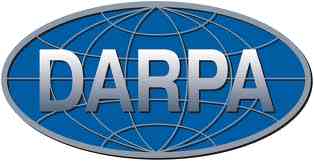Resilience Monitoring Tool Could Be Good for Troops–and Students

Dr. Russell Shilling is the only Aerospace Experimental Psychologist I’ve met. He joined the Navy 20 years ago and has been pitching the use of learning games ever since. Shilling has a twin focus at DARPA–the military’s R&D shop–psychological health in the military and game-based approaches to STEM. He’s been able to combine his interest in troop health and youth development by working with Sesame Street to develop content to help kids adjust to multiple deployments.
Captain Shilling and I had the opportunity to speak with Investing in Innovation (i3) grant managers gathered in Washington DC today (at least those of us that beat the crazy thunderstorms and widespread flight delays to make it to town).
Shilling’s initial vision for learning tools was shaped by the Neal Stephenson classic, The Diamond Age, where a smart device imprints to a child, senses physical and psychological health, and become a smart tutor utilizing sophisticated voice recognition and artificial intelligence.
Addressing the future of learning, Shilling mentioned several promising projects including CS2N Learn, a hub for computer science activities developed by CMU. Shilling and the CS2N crew are confident that, “Computer science will definitely be in your future.” Shilling featured Refractions, a game from UW that teaches fractions. He noted that “There won’t be a best video game for every student and every skill.”
Here’s the really big idea Dr. Shilling is working on—he wants to use mobile devices to assess psychological health. He’s confident that starting with honest signal theory as a starting point his team will be able to build an app that senses when things are going south by analyzing verbal signals, nonverbal cues, changes in behavioral patterns (sleeping, eating, etc), and even by evaluating artistic expression.
The proliferation of post traumatic stress in the military makes this work important. (The TIME cover story this week is about the prevalence of military suicide). Shilling believes that resilience is an important and poorly understood factor for both troops and students.
If you are a regular reader, you know I’m optimistic about building motivational profiles from keystroke data that will help zero in on the most productive learning experiences for each student. (Here’s a summary of how keystroke data will populate learner profiles which will drive customized playlists.) But Shilling’s work suggests that I’ve been narrow-minded about inputs. His work suggests that teachers, counselors, and parents should have access to smart learning tools that monitor psychological as well as academic health.
Collecting a wide range of inputs will make some people nervous but good teachers and counselors do this all day long—they read cues to spot academic and personal problems that may require intervention. When megabits of academic and behavior data are collected in a comprehensive profile, it will be important for parents to have the ability to manage a privacy profile to control how much data is collected and who can access the data. (There will be a Digital Learning Now white paper on this topic.)
When it comes to putting all of this data to use, the team from Forsyth, Georgia, a pioneer in encouraging students to bring their own tech, described an exciting vision for a learning platform with a smart recommendation engine. It sounds a lot like the ten elements described here.
The i3 managers are leading projects that range from big scaling efforts of proven improvement strategies to innovative pilot projects. Conferences like this are a great opportunity for them to share project management, outreach, and evaluation strategies. And perhaps even more importantly, as Dr. Shilling did for me, to create context to understand how today’s tasks fit into the dynamic future of learning.








0 Comments
Leave a Comment
Your email address will not be published. All fields are required.